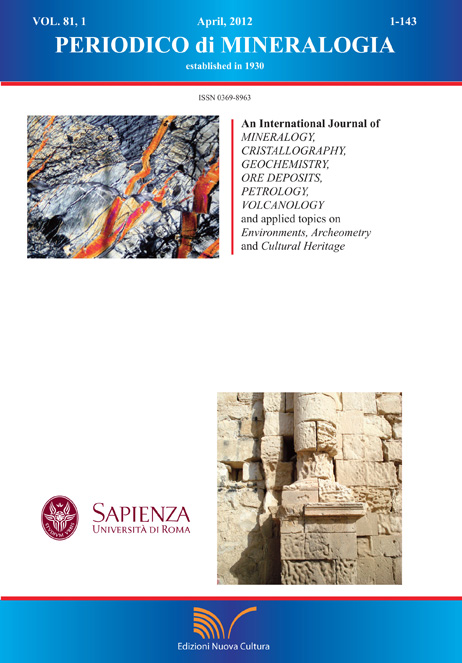The Acquabona Limestones (Livornesi Mountains, western Tuscany) and their use as a building material.
DOI:
https://doi.org/10.2451/2012PM0001Keywords:
Limestone, building material, XRF, XRPD, physical and mechanical properties, Tuscany.Abstract
Within the framework of a wide-ranging research study on the historical stones used as building materials in western Tuscany, the chemical, mineralogical, physical and mechanical properties of forty-seven samples from the Acquabona Limestones (member of the Rosignano Limestone Formation, Late Miocene) were investigated. Data were drawn from un-weathered samples collected from both a few historical Acquabona quarries near Rosignano Marittimo, a small town 35 km south of Pisa, and two small outcrops in the Ardenza area, some kilometres south of Livorno. The analysed rocks show comparable macroscopic and textural features and a narrow range of chemical, mineralogical, physical and mechanical properties, except for those depending on the calcite/dolomite ratio.
From the Middle Ages up to the 20th century, the Acquabona Limestones were widely used as an inexpensive, low-grade building material and as an essential raw-material for soda production. For a construction purpose, these rocks were employed in the local buildings at Rosignano Marittimo and Livorno, the areas where they were quarried. Minor amounts of Acquabona Limestones were also employed in historical buildings of Pisa.


